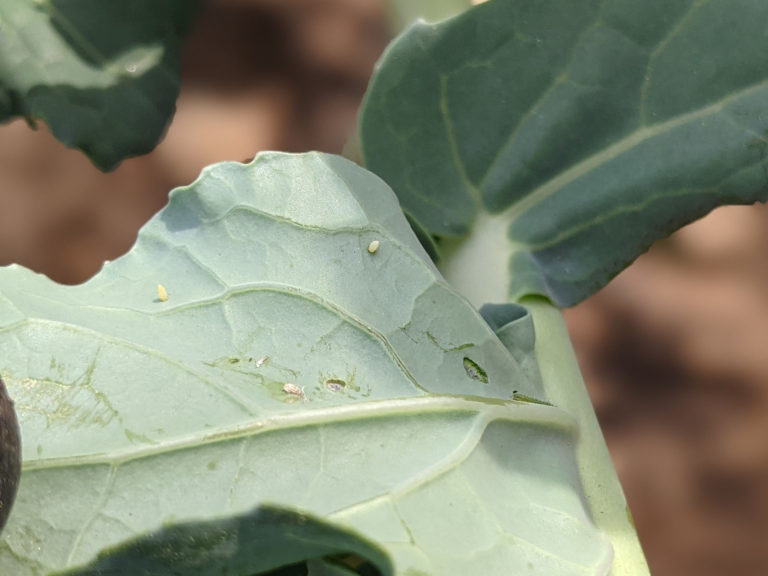Cabbage Moth
Insect Identification
Images
Damage
When scanning your plants for cabbageworm damage, look for holes in leaves. This is the most obvious sign that your plant might be a host to the cabbageworm. Initially this damage is minimal, but as it matures and more eggs hatch, the damage will become more substantial.
To verify you have cabbageworms, look at the underside of the leaves. If this is during the day, you will be likely to spot the green worm hiding along the veins of the leaves. If this is during the evening, the worm may be actively feeding. You can also look for the eggs, but this is much harder to spot.
Affected Plants
The cabbage moth is primarily known for attacking plants in the brassica genius. While worldwide it has been seen consuming a wide assortment of plants, those at Rose Tree Garden primarily feed on the plants below
- Broccoli
- Cabbage
- Cauliflower
- Collards
- Kale
Management
Unless there is a severe infestation on your plants or you keep encountering large numbers of extremely small caterpillars, physical removal should suffice. Control techniques are listed in order of effectiveness.
Row Cover
- Row covers are an effective way to protect your plants from cabbageworm damage. If placed on the plant early enough, the cabbage moth will be unable to lay its eggs on your plant, protecting it from future damage. Knowing exactly when to cover your plants can be difficult, so we recommend leaving row cover on your plants from the moment they are planted until harvest.
Physical removal
- If you are able to regularly check on your plants, you will be able to spot the cabbageworm before it becomes a major issue. If spotted, check the undersides of the leaves and squish the worm with a gloved hand. If you are able to spot eggs, squish those as well.
Insecticides
- The control for cabbageworms is just like those for other caterpillars. If the cabbageworm numbers become too great to control with physical removal, all of the insecticides below are effective. Carefully read the instructions for each to know how they work.
Predators
- Wasps are common predators of caterpillars yet do not sting humans. It is important to allow wasps to continue to live in and around the gardens by not spraying harmful insecticides. However, you should not rely on wasps to control your cabbageworm issues.


